Can Silicone Tongs Handle the Heat? (Grill Edition)
When it comes to BBQ or grilling, the right tools are crucial for both safety and culinary success. Silicone tongs are a popular choice in many kitchens due to their non-stick properties, heat resistance, and gentle grip on food. But can you use silicone tongs on grill? Let’s take a closer look at the capabilities and limitations of silicone tongs for grill use.
Capabilities:
- Heat Resistance: Most silicone tongs are heat resistant up to 500°F (260°C), making them suitable for handling food on a grill without melting or degrading.
- Non-Stick Surface: Silicone is known for its non-stick properties, ensuring that your food won’t stick to the tongs, making flipping and handling food easier.
- Gentle Grip: The soft silicone tips are gentle on delicate foods like fish or vegetables, reducing the risk of tearing or damaging them.
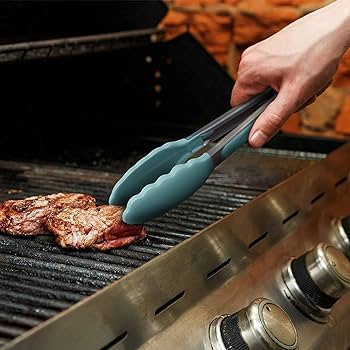
Limitations:
- Direct Flame Exposure: While silicone tongs can handle high temperatures, they are not designed for direct exposure to open flames. Prolonged contact with flames can cause the silicone to degrade.
- Durability: Silicone is softer than metal, which can sometimes make it less durable for heavy-duty grilling tasks, like handling large cuts of meat.
- Grip Strength: Silicone tongs may not provide the same firm grip as metal tongs, especially when dealing with heavier items.

Overall, silicone tongs can be a great addition to your grilling toolkit, especially for specific tasks that benefit from their gentle touch and non-stick properties. However, it’s important to understand their limitations and use them appropriately to get the best results.
Understanding Silicone as a Material
Silicone is a versatile and durable material that has gained popularity in various kitchen tools, including tongs. Its unique properties make it particularly suitable for high-heat environments, such as grilling. Let’s delve into the properties of silicone that contribute to its heat resistance and overall performance.
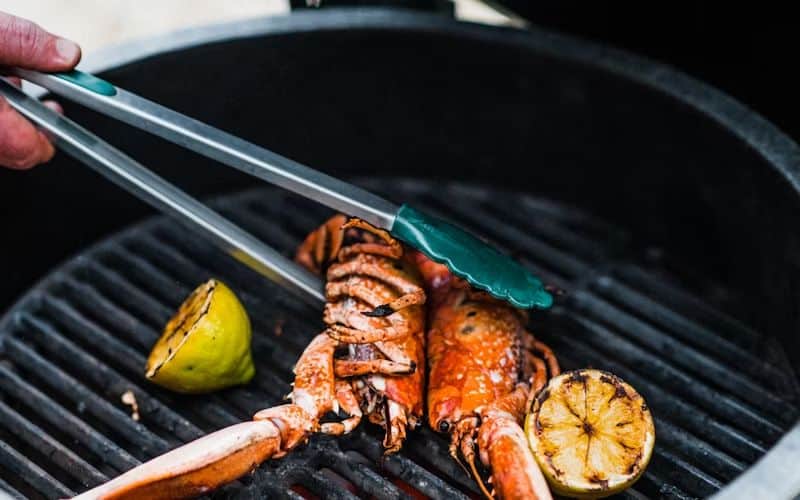
- Heat Resistance: Withstands temperatures up to 500°F (260°C), ideal for high-heat grilling without melting or deforming.
- Flexibility and Durability: Flexible and durable, providing a gentle grip on food without cracking or breaking.
- Non-Reactive Nature: Does not react with food or substances, ensuring safety by not leaching harmful chemicals even at high heat.
- Non-Stick Properties: Naturally non-stick surface prevents food from clinging, making handling and cleaning easier.
- Resilience to Temperature Fluctuations: Endures rapid temperature changes without degrading, maintaining performance across a wide temperature range.
Silicone’s heat resistance, flexibility, non-reactive nature, and non-stick properties make it a reliable material for grilling tools. However, understanding these properties also highlights the importance of using silicone tongs appropriately to maximize their benefits and longevity.
Comparison with Other Materials
When selecting tongs for grilling, it’s essential to consider how different materials handle heat and ensure safety. Let’s compare silicone tongs with metal and plastic tongs to understand their performance and safety in high-heat grilling environments.
Metal Tongs

Benefits:
- Superior Heat Resistance: Metal tongs, typically made from stainless steel or aluminum, can withstand extremely high temperatures without any risk of melting or deforming. This makes them ideal for direct exposure to open flames and high-heat grilling.
- Durability: Metal tongs are robust and long-lasting, capable of handling heavy-duty tasks such as flipping large cuts of meat or moving hot coals.
- Firm Grip: The rigid structure of metal tongs provides a strong and secure grip, essential for handling heavy or unwieldy items on the grill.
Drawbacks:
- Heat Conductivity: Metal tongs can conduct heat, making the handles hot to touch if left on the grill for too long. This can pose a risk of burns if not handled with care.
- Risk of Damage to Grill and Food: The hard edges of metal tongs can scratch non-stick grill grates and may damage delicate foods, such as fish or vegetables.
Plastic Tongs

Risks and Limitations:
- Low Heat Resistance: Most plastic tongs are not designed to withstand high temperatures and can melt or deform when exposed to the intense heat of a grill. This makes them unsuitable for direct grilling tasks.
- Chemical Leaching: At high temperatures, certain plastics can release harmful chemicals into food, posing health risks.
- Limited Durability: Plastic tongs are generally less durable than metal or silicone options. They can crack or break under the pressure of handling heavy or dense foods.
Rubber Tongs
Benefits:
- Heat Resistance: Rubber tongs are typically designed to withstand moderate heat, making them suitable for low to medium-heat grilling tasks.
- Grip: Rubber tongs offer a soft, non-slip grip, making them comfortable to use and easy to handle even when dealing with slippery foods.
- Flexibility: The flexible nature of rubber can be gentle on delicate foods, reducing the risk of tearing or damaging items like fish fillets or vegetables.
Drawbacks:
- Limited Heat Tolerance: Rubber tongs are not suitable for high-heat grilling as they can melt or degrade when exposed to intense heat.
- Durability: They may not be as durable as metal or silicone tongs and can wear out over time with regular use.
For comparison between rubber tongs and silicone tongs, you may visit and read about using rubber tongs on the grill.
While metal tongs excel in heat resistance and durability, they can become hot and potentially damage delicate items. Plastic tongs, on the other hand, are unsuitable for high-heat grilling due to their low melting point and potential chemical leaching. Rubber tongs offer a comfortable grip and flexibility but are limited in their heat tolerance and durability.
Key Features of High-Quality Silicone Tongs
Choosing the right silicone tongs for grilling involves considering several key features that ensure they can handle high heat and provide the best functionality and safety. Here’s what to look for in high-quality silicone tongs:

Design and Ergonomics
Impact on Functionality and Safety:
- Comfortable Grip: High-quality silicone tongs should have ergonomically designed handles that fit comfortably in your hand. This ensures better control and reduces hand fatigue during extended grilling sessions.
- Non-Slip Handles: Look for tongs with non-slip grips, which can be especially helpful when handling greasy or wet foods. This feature enhances safety by reducing the risk of dropping hot items.
- Length: Longer tongs (around 12 inches or more) keep your hands safely away from the heat, reducing the risk of burns. They also provide better leverage when handling larger food items on the grill.
- Locking Mechanism: A built-in locking mechanism allows you to close the tongs for compact storage. This feature also keeps the tongs in a closed position when not in use, preventing accidental contact with hot surfaces.
Safety Features
Built into High-Quality Silicone Tongs:
- Heat Resistance: Ensure the silicone is rated for temperatures up to at least 500°F (260°C). This heat resistance is crucial for grilling, where high temperatures are common.
- Food-Grade Silicone: High-quality tongs are made from food-grade silicone, which is non-toxic and free from harmful chemicals like BPA. This ensures that no harmful substances leach into your food.
- Reinforced Core: Some silicone tongs have a metal core that provides added strength and durability. This core helps maintain the tongs’ shape and improves their ability to handle heavier foods without bending.
- Wide, Flat Tips: Silicone tongs with wide, flat tips provide a secure grip on food, reducing the risk of slipping. This design is particularly useful for turning delicate items like fish or vegetables without tearing them.
- Heat-Resistant Handles: The handles should be designed to stay cool, even when the tongs are exposed to high heat. Some tongs feature silicone grips on the handles to further enhance heat resistance and comfort.
Practical Tests and Results
Understanding the practical performance of silicone tongs under real-world grilling conditions is crucial to determine their suitability. Here’s an overview of practical tests and results, focusing on temperature thresholds and their performance in various grilling scenarios.
Temperature Thresholds
Data on Maximum Temperature Resistance: Silicone tongs are typically rated for heat resistance up to 500°F (260°C). In practical tests, this threshold is crucial for assessing their performance on a grill. To evaluate this, tongs were exposed to different grilling conditions, such as:

- Direct Grill Surface Contact: Tongs were placed directly on a hot grill surface reaching temperatures around 450°F (232°C). The tongs maintained their integrity without any signs of melting or warping.
- Proximity to Open Flame: Tongs were used near an open flame, avoiding direct contact but operating in high ambient temperatures. The silicone tips remained stable, although it is recommended to avoid prolonged exposure to direct flames.
These tests confirm that high-quality silicone tongs can withstand the typical temperatures encountered during grilling, provided they are not exposed directly to open flames for extended periods.
Performance in Grilling Scenarios
Evaluation During Actual Grilling Operations:
- Flipping Burgers and Steaks: Silicone tongs were used to flip burgers and steaks on a hot grill. The wide, flat tips provided a secure grip, and the non-stick surface ensured the meat did not adhere to the tongs. The gentle grip prevented tearing, especially with delicate meats like fish fillets.
- Handling Vegetables: When grilling vegetables like asparagus and bell peppers, the silicone tongs excelled in maintaining a gentle yet firm hold. The heat resistance was evident, as the tongs easily managed the heat without transferring it to the handles.
- Turning Hot Dogs and Sausages: For lighter items such as hot dogs and sausages, the silicone tongs performed admirably. The non-slip grip and ergonomic design allowed for precise control, ensuring the food did not slip or fall through the grill grates.
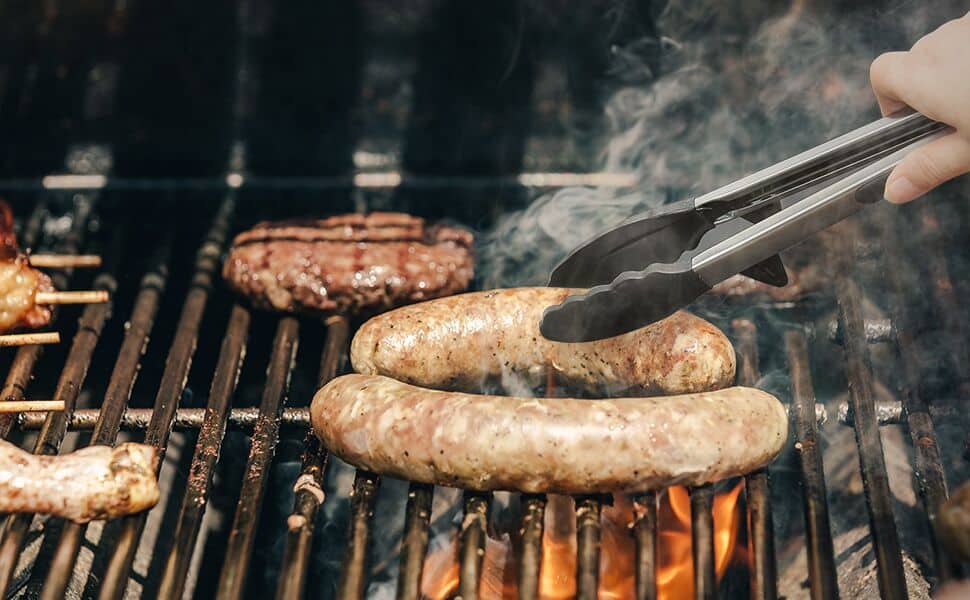
Summary of Results:
- Heat Resistance: Confirmed up to 500°F (260°C), with no degradation in performance under typical grilling conditions.
- Grip and Control: Effective in handling a variety of foods, from delicate vegetables to heavier meats, without damaging the food or slipping.
- User Safety: The ergonomic design and heat-resistant handles ensured safe and comfortable operation throughout the grilling process.
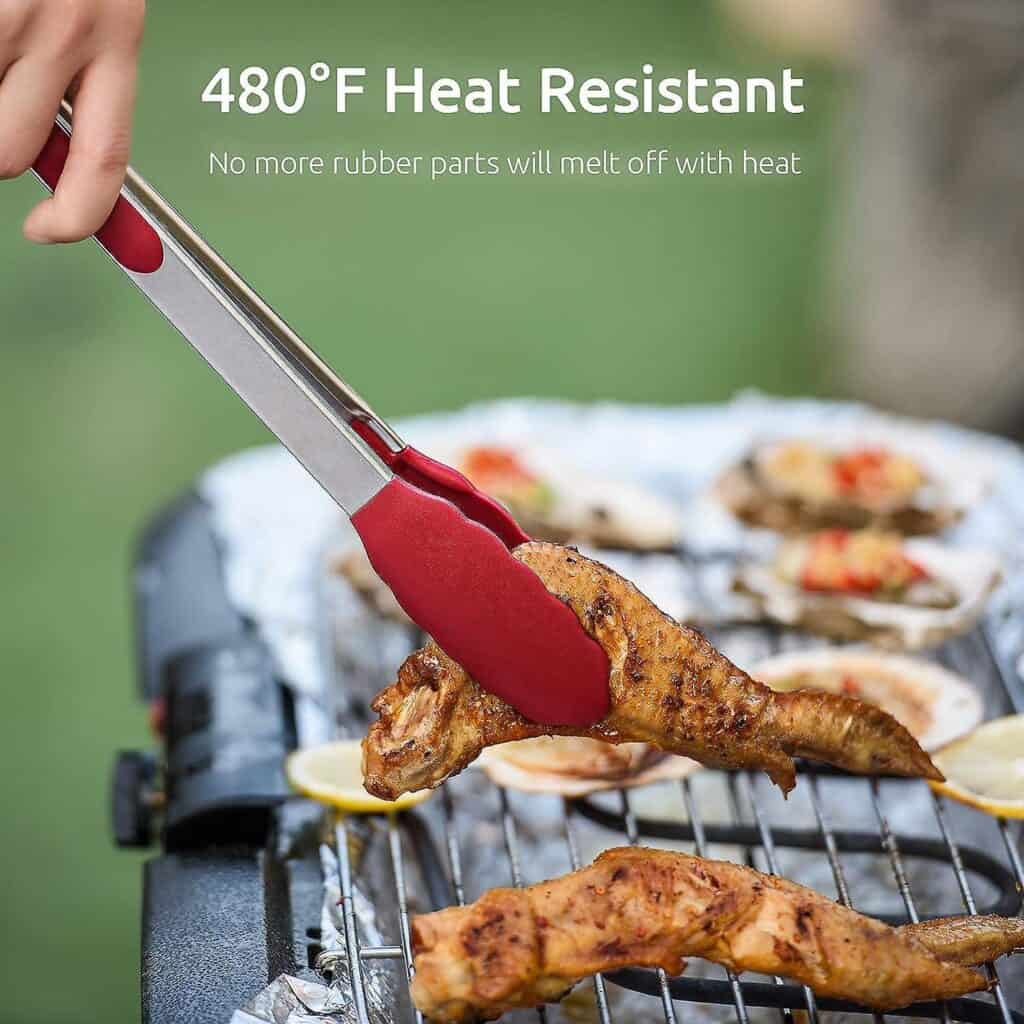
In conclusion, silicone tongs, when used within their specified temperature limits and avoiding direct flame contact, prove to be effective and reliable tools for grilling. Their non-stick properties, gentle grip, and ergonomic design make them suitable for a wide range of grilling tasks, providing both safety and functionality.
User Tips and Maintenance
Proper use and maintenance of silicone tongs can significantly extend their lifespan and ensure they remain safe and effective for grilling. Here are some guidelines on using and maintaining your silicone tongs for longevity.
Cleaning and Care
Best Practices for Cleaning:
- Hand Wash Preferred: While many silicone tongs are dishwasher safe, hand washing is often recommended to preserve their integrity. Use warm, soapy water and a non-abrasive sponge to clean the tongs.
- Avoid Abrasive Cleaners: Steer clear of harsh chemicals and abrasive cleaning tools that can damage the silicone surface. Mild dish soap is usually sufficient for removing grease and food residue.
- Dry Thoroughly: After washing, ensure the tongs are thoroughly dried before storing to prevent moisture buildup, which can lead to mold or mildew.
Storing Silicone Tongs:
- Locking Mechanism: Utilize the built-in locking mechanism (if available) to keep the tongs closed and compact for storage. This prevents unnecessary stress on the silicone and maintains their shape.
- Avoid Direct Sunlight: Store silicone tongs in a cool, dry place away from direct sunlight, which can degrade the silicone over time.
- Hanging Storage: If possible, hang the tongs to avoid contact with other utensils, reducing the risk of scratches or damage.
Longevity and Replacement: Silicone Tongs
Signs to Replace:
- Cracks or Tears: Look for any splits or damage in the silicone.
- Discoloration: Extreme discoloration can indicate wear.
- Loose Grips: If the silicone starts peeling or feels loose.
- Warping: Misshapen tongs that don’t close properly.
- Persistent Odors: If they retain strong smells even after cleaning.
When to Replace:
- Regular Users: Every 1-2 years.
- Casual Users: Every few years or when you see damage.
Tips to Prolong Life:
- Avoid Direct Flames: Keep them away from direct heat.
- Proper Cleaning: Use mild soap and avoid abrasive cleaners.
- Store Properly: Keep in a dry, shaded place.
- Avoid Sharp Objects: Don’t use them to cut or pierce food.
If you’re looking to explore more about grilling tongs, you might want to check out our blog on the best grill tongs of the year. This guide will help you find the perfect pair to elevate your grilling game.
Disclosure: Our blog contains affiliate links to products. We may receive a commission for purchases made through these links. However, this does not impact our reviews and comparisons. We try our best to keep things fair and balanced, in order to help you make the best choice for you.

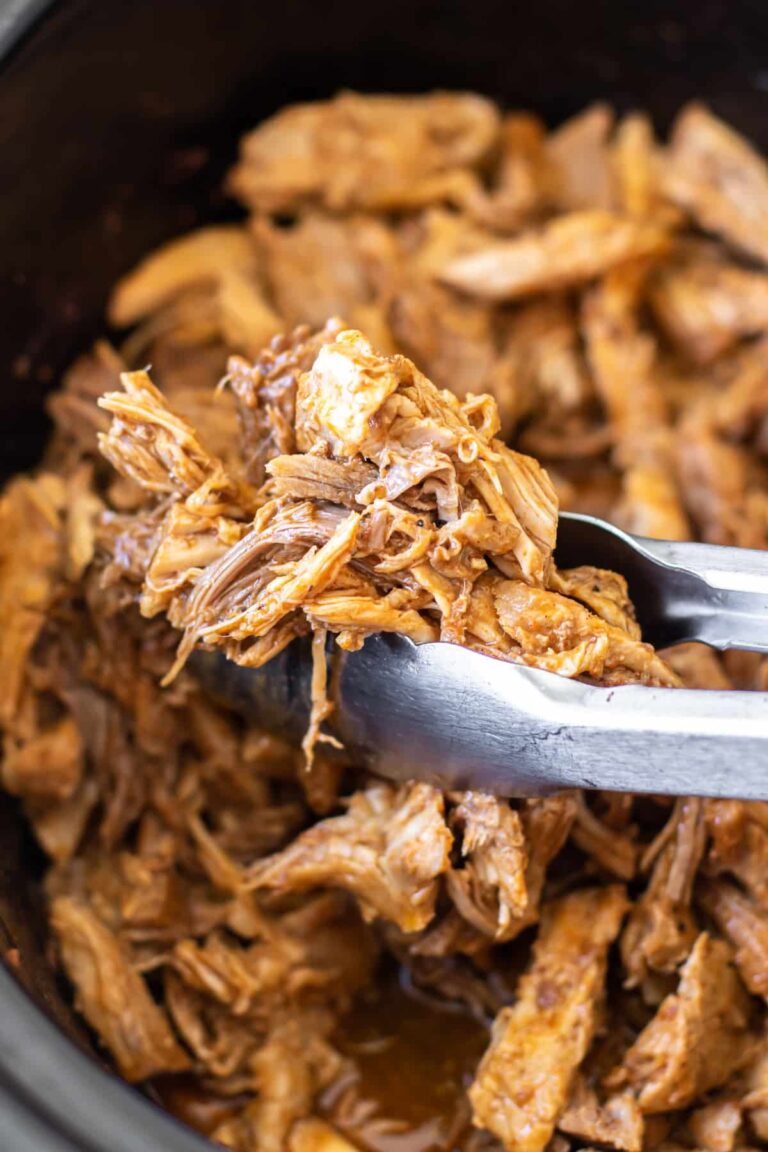
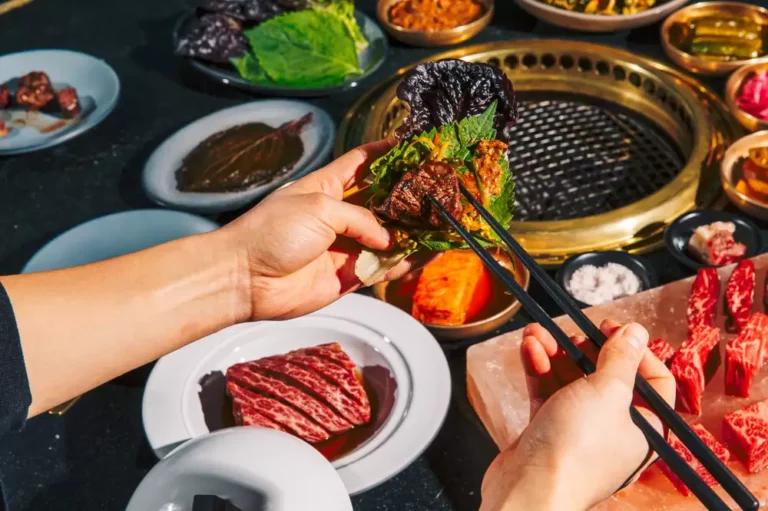
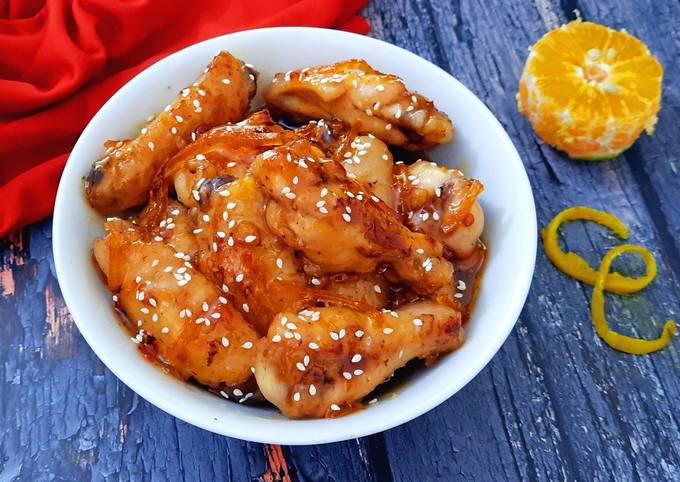

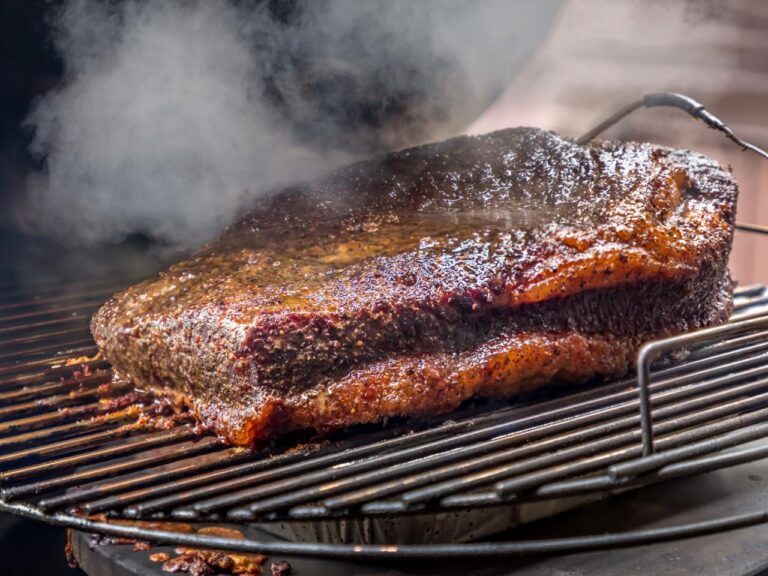

3 Comments